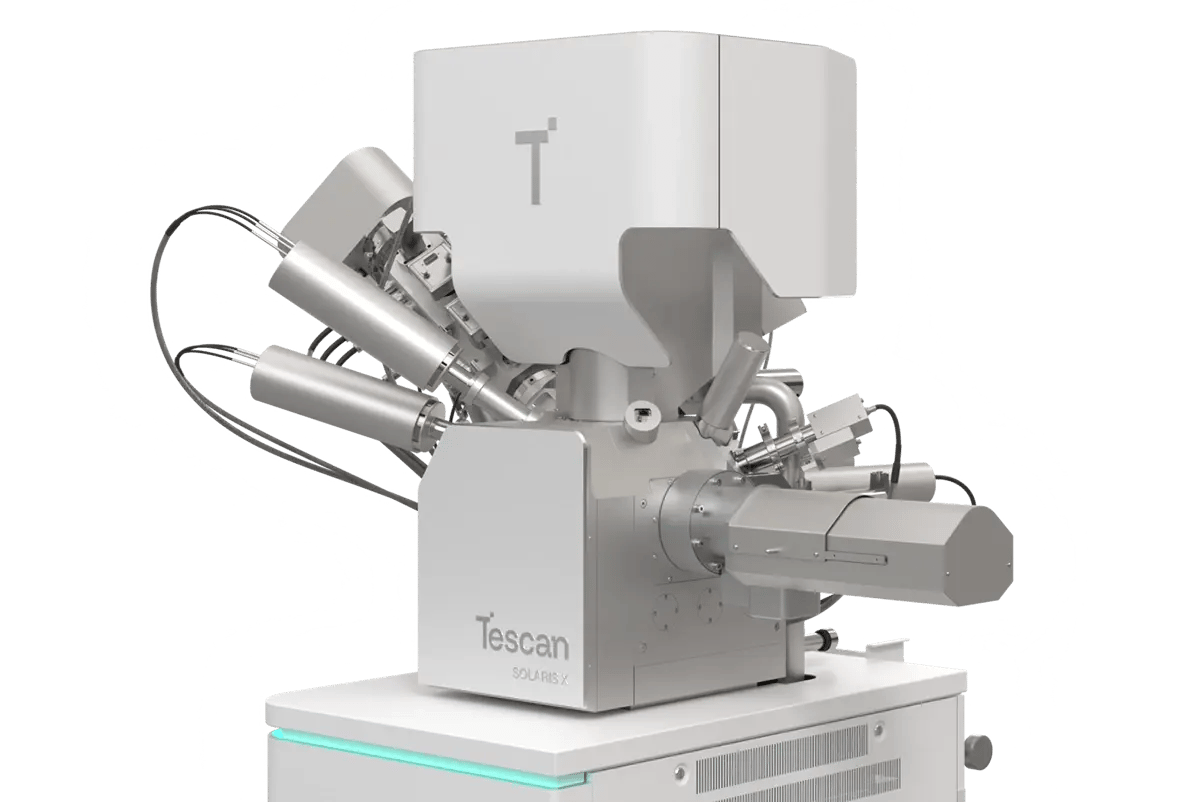1. Root of the Problem
Why Standard Cross Sectioning Fails in Flexible OLED Displays
Cross-sectioning OLED displays for failure analysis requires extreme care due to their multilayer architecture and use of beam-sensitive materials. Standard mechanical polishing or conventional Ga FIB techniques often introduce artifacts like delamination, tearing, or layer distortion—especially in flexible AMOLED panels.
Organic layers, ITO, polyimide, and metal contacts differ widely in mechanical and electrical properties. Preparing wide-area sections without disrupting interfaces or losing contrast is technically demanding. Minor sample deformation or beam damage can obscure critical failure points.
Tescan SOLARIS X addresses these issues with a plasma FIB-SEM workflow built specifically for large-area, artifact-free OLED display preparation.
- Xe plasma FIB supports wide cross sections up to 1 mm
- High-current milling preserves planarity across thin-film stacks
- Low-kV SEM imaging enhances contrast in ITO, Al, and SiNx layers
- Stable prep even on curved or flexible substrates
With Tescan SOLARIS X, display manufacturers and failure analysts can achieve consistent, high-resolution cross-sections that preserve OLED layer integrity and reveal the root cause of defects.
2. Materials and Methods
How OLED Display Cross-Sections Were Prepared Using Tescan SOLARIS X Plasma FIB-SEM
A flexible AMOLED display panel was selected to demonstrate large-area cross-sectioning of beam-sensitive multilayer stacks. The region of interest was identified using high-resolution SEM imaging with a 2 keV in-beam SE detector to ensure precise targeting of the active display area.
Cross-sectioning was performed using the iFIB+ Xe plasma column at 30 keV with a 2 μA beam current. This allowed the creation of a uniform, high-aspect-ratio trench several hundred microns deep and up to 1 mm wide. Pt protection was applied before milling to preserve surface detail.
Throughout the workflow, uniform trench geometry was maintained across materials including polyimide, ITO, SiNx, and Al. Low-kV SEM was used to inspect the interface quality and detect defects.
This preparation method delivers artifact-free cross-sections that expose every critical interface in flexible OLED structures, making it a powerful tool for failure analysis, materials characterization, and display process optimization.
3. Results and Discussion
Tescan SOLARIS X enabled consistent preparation of large-area cross sections in flexible OLED displays, with trench widths up to 1 mm and depths of several hundred microns. High-current Xe plasma milling preserved geometry and prevented delamination across soft organics and brittle oxides.
SEM imaging revealed well-defined interfaces between polyimide, ITO, SiNx, and Al layers. Mid-angle BSE and in-beam SE detectors delivered strong contrast for locating defects, delamination points, and layer discontinuities. Step coverage and contact features were clearly resolved with minimal distortion.
TFT backplanes, electrode stacks, and organic layers retained structure and spatial alignment. Even in beam-sensitive regions, low-kV SEM enabled detailed inspection without damage.
This workflow provides high-integrity cross sections for failure analysis, interface evaluation, and process optimization in OLED and Micro-LED displays.
The workflow delivered artifact-free results within routine analysis times, demonstrating suitability for high-throughput failure analysis of MEMS devices. Compared to mechanical methods, plasma FIB-SEM offered superior reliability, higher resolution, and reduced risk of sample loss.









